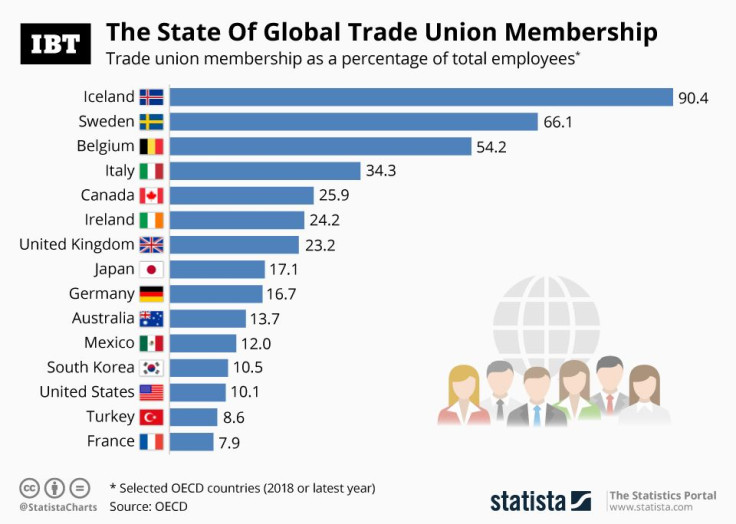Infographic: The Shape Of Global Trade Union Membership

Trade union membership is falling across developed nations. In 1985, 30 percent of workers were members of trade unions in OECD countries and that has now fallen to 16 percent. Reasons for the decline include technological and organizational changes, globalization, policy reform and the decline of the manufacturing sector. Given economic dissatisfaction, slow growth in wages and increasing levels of inequality, there is a renewed interest in the use of trade unions for strengthening workers' collective voices and bargaining power. If progress is to be made, however, some countries are going to have a lot of work to do.
Union density varies considerably between countries and Iceland has the highest rate of membership at 90.4 percent, according to the OECD. The Icelandic Confederation of Labour alone has 104,500 members, accounting for about half of the country's employees. Scandinavia has a long history of trade unions and Sweden has one of the world's highest rates at 66.1 percent. Back in 1983, the U.S. had a labor union density of 20.1 percent and today that has fallen to 10 percent.





















